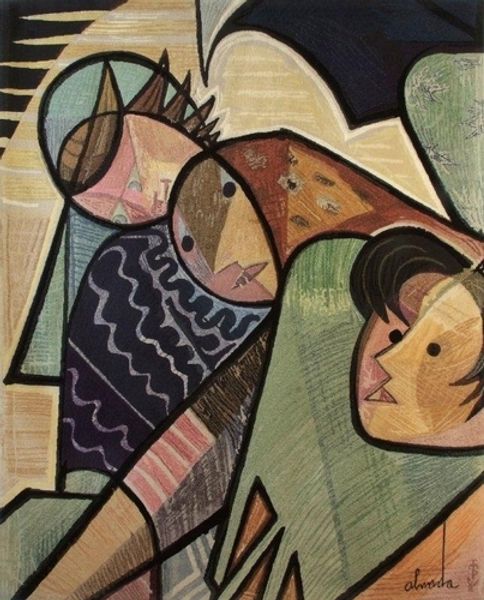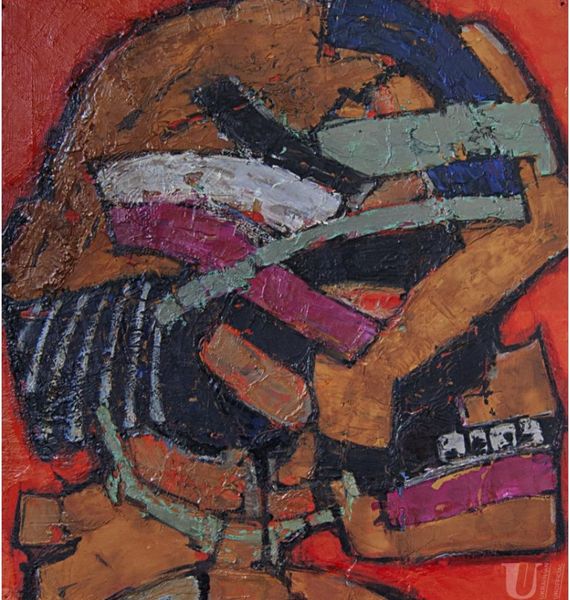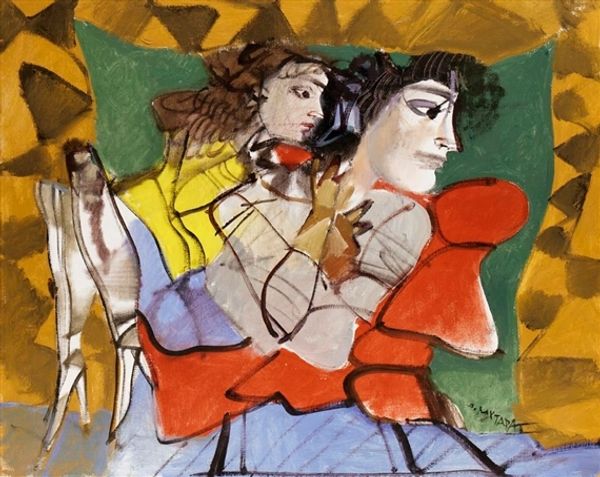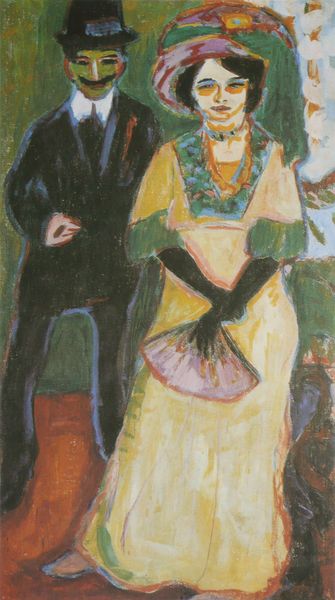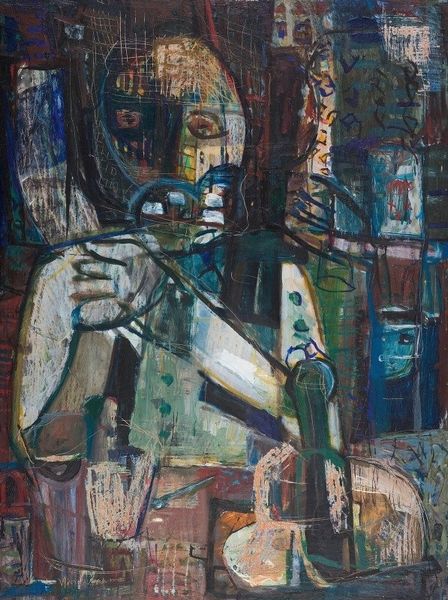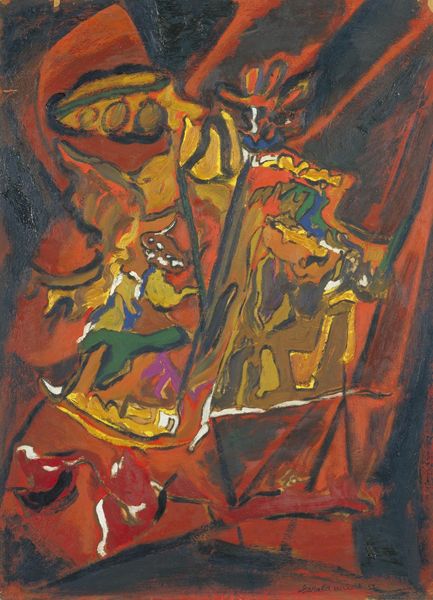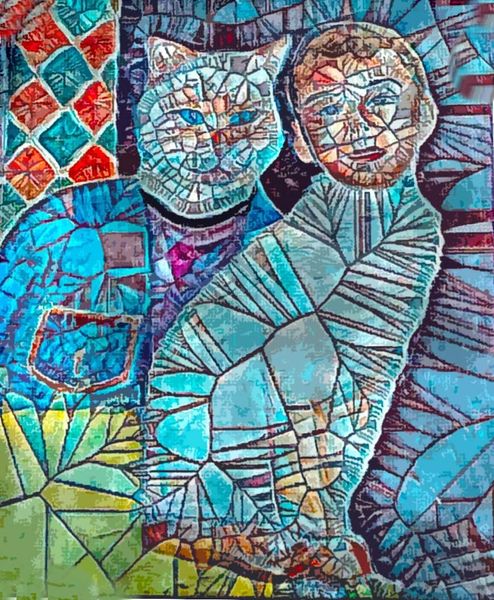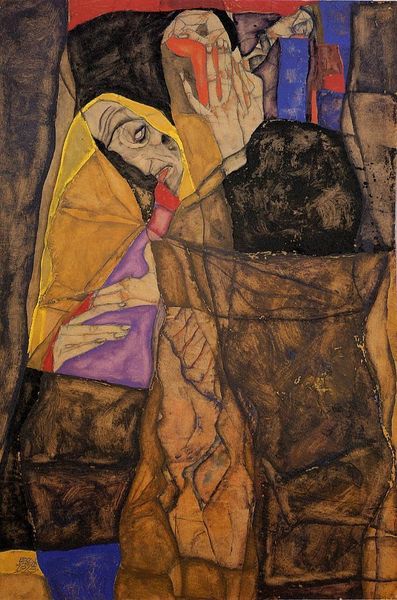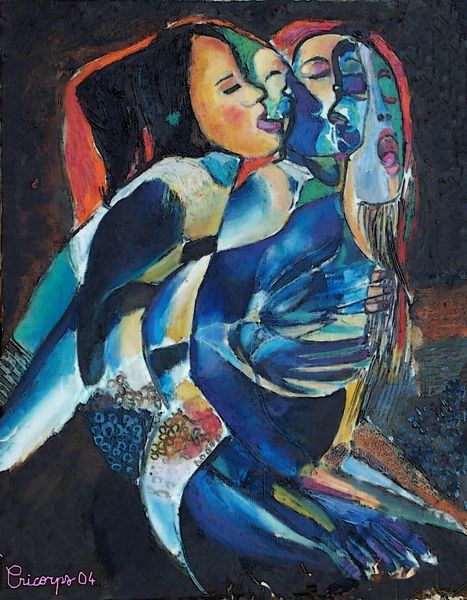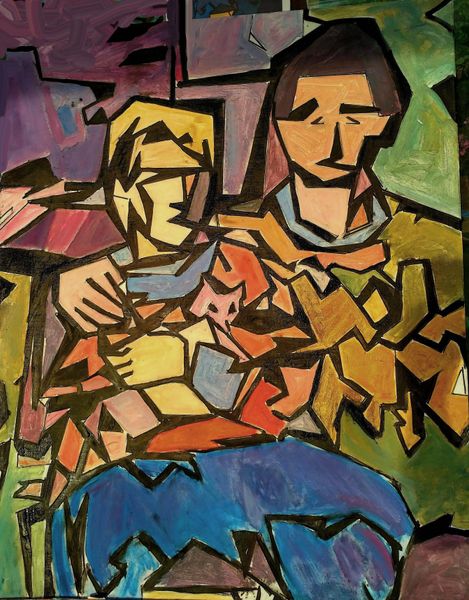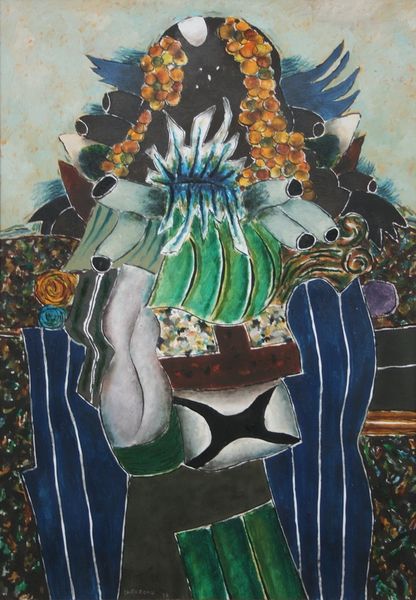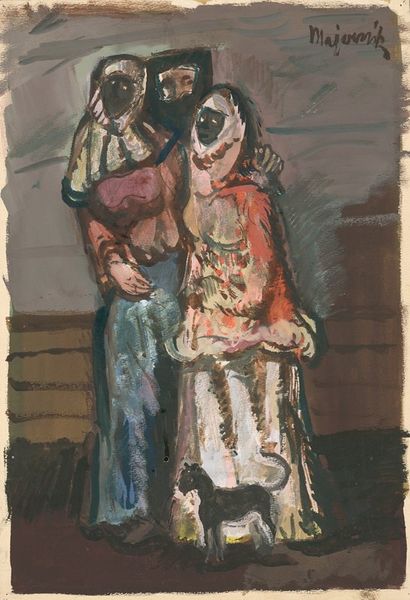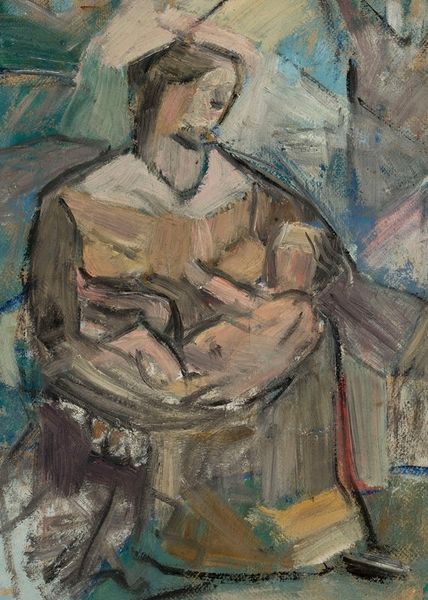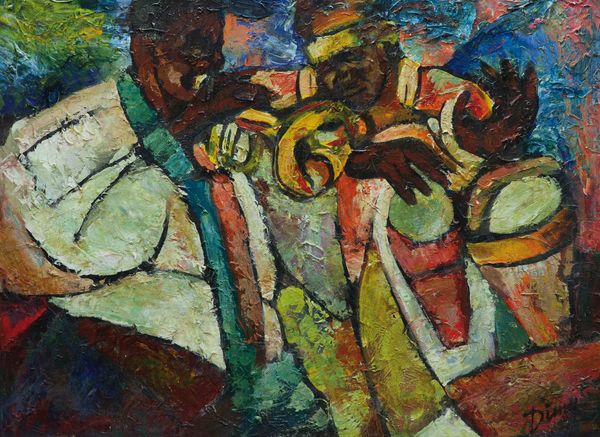
Dimensions: support: 1264 x 806 mm, frame: 1530 x 1803 x 130 mm
Copyright: © The estate of Robert Colquhoun | CC-BY-NC-ND 4.0 DEED, Photo: Tate
Curator: Robert Colquhoun, born in 1914, painted this piece, called "The Fortune Teller." It resides in the Tate collection. Editor: It’s striking, almost harsh. The figures are so angular, and the colours seem deliberately muted, creating a sense of unease. Curator: Colquhoun often depicted marginalized figures, reflecting the socio-economic anxieties of post-war Britain. Fortune tellers were often viewed with suspicion, existing on the fringes of society. Editor: The planes of colour are so fractured, and the line work is so rough. It's almost as if the figures are broken or fragmented, mirroring a broken society. Curator: Indeed, Colquhoun's work is deeply rooted in his social context. His figures are symbols of broader societal fractures. Editor: Looking at the composition itself, the birdcage is such a powerful motif. Are the birds free, trapped, or perhaps offering a path to the future? Curator: These themes of predetermination and societal constraints were central to his work, acting as a commentary of the period. Editor: Thinking of this painting in terms of texture, form, and historical context offers a complete view of its power. Curator: And remembering its social background gives the painting the weight and meaning it demands.
Comments
http://www.tate.org.uk/art/artworks/colquhoun-the-fortune-teller-t02076
Join the conversation
Join millions of artists and users on Artera today and experience the ultimate creative platform.
By the mid-1940s the scottish painter Robert Colquhoun was fêted as a Neo-Romantic artist, along with John Minton, John Craxton, Robert McBryde and Michael Ayrton. These younger generation Neo-Romantics were initially regarded as followers of Graham Sutherland. However, they soon abandoned Sutherlandesque landscape painting and focused almost entirely on the subject of the human figure. Colquhoun's peculiarly expressive treatment of the figure, which owed much to his mentor the Polish artist Jankel Adler, gained critical acclaim in the immediate post-war years. Colquhoun's series of paintings depicting pairs of women have been interpreted as discreet portraits of himself and his life-long partner Robert McBryde. Gallery label, September 2004
